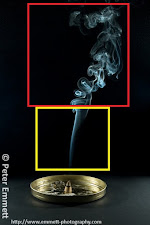Usually we choose the standard SST turbulence model in Ansys CFX without knowing what is purpose of SST and other models that can be defined in Ansys CFX Workbench. In this post we will try to explain each of the turbulence models which U can pick in Ansys CFX.
 |
| Turbulence window in Ansys CFX |
First, it is necessary to explain what the phenomenon of turbulence is. In general turbulent flow doesnt have distinct definition but there are some main characteristic factors that all together can help identyfing flow as turbulent. (Laminar flow - yellow frame, Turbulent flow - red frame)
 |
| Turbulence and Laminar |
The main factors are :
1) Irregularity - flow is random and chaotic, we cannot find a schematic pattern of flow
2) Non-linearity - we can define turbulent flow as non-linear phenomena because it has unpredictable behavior defined as high Reynolds Number
3) Vorticity - we can find swirling structures in flow
4) Dissipation - we can find dissipation of energy in turbulent flows, transfer of energy between main factors
5) Diffusivity - turbulent flow increase diffusivity
https://www.diva-portal.org/smash/get/diva2:1083080/FULLTEXT01.pdf
When to use each turbulence models in Ansys CFX ???
Laminar - is used when U dont need to analyze flow pattern in model and U make assumption that shape of this flow has no effect to thermal effects for example.
k-epsilon - first and basic model of turbulence in CFX. This model provides improved predictions of turbulent flow in all directions (vector, cylindrical ). Extension of this model is K-omega model which includes wall effects. More computionally expensive.
Reynolds Stress Eq - In case of complex turbulent flows, Reynolds stress models are able to provide better predictions.Such flows include turbulent flows with high degrees of anisotropy, significant streamline curvature, flow separation, zones of recirculation and influence of mean rotation effects. Use this model If U focus on shape of turbulent flow because this model is most complete for define non regularity patterns.
https://en.wikipedia.org/wiki/K-epsilon_turbulence_model
SST (Shear Stress Transport) Model - one of the most effective turbulent model for the most of cases. This is combination of laminar, k-epsilon and k-omega models. Is used if U cannot full define in theoretical aspects all phenomenas in flow of Ur analyzing problem. SST is most time efficient in Simulation length. Use this model in thermal simulations where shape of turbulent flow is not important to U.
https://www.xceed-eng.com/which-cfd-turbulence-model/
If you want to learn more about the phenomenon of turbulence, click on the link below.
On the Britannica website you can find a general description of the phenomenon of turbulence from the strictly theoretical point of view.
fluid mechanics - Turbulence | Britannica
And of course, something that scientists and engineers like the most :)
Navier Stoke's equations. The analysis of the derivation of the formulas and the dependencies contained in them is a real treat for your brains. I strongly encourage you to read the material below.
Chapter_11.pdf (uni-heidelberg.de)
And if you are very interested in the above article and you want to develop your knowledge on this topic, you can always take part in the Clay Mathematics Institute competition. If you solve the Navier Stokes equations, you will receive a prize of $ 1 million. See below for more information.
The Clay Mathematics Institute | Clay Mathematics Institute




No comments:
Post a Comment